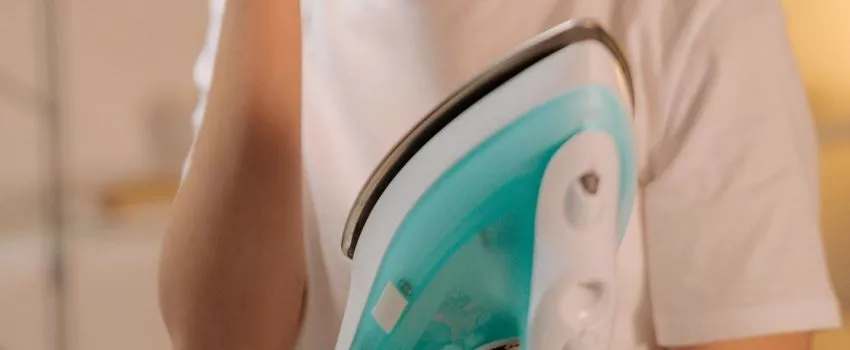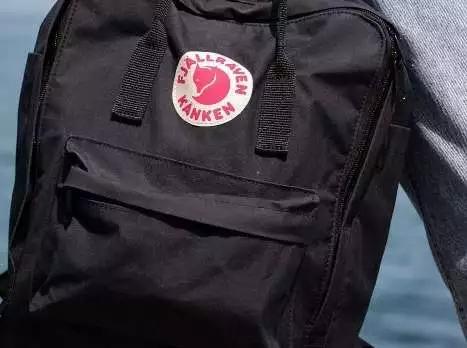Iron-on patches need to be heated so that the adhesive on the patch is activated. Thus, if you don’t use the correct amount of heat from the iron, the patch will fall off after you are done attaching it to your fabric.
Therefore, it is essential you know how to set up the heat to get a good result in the end. I am sure you don’t want to spend a lot of time and other resources and then have an iron-on patch that is not firmly attached to your fabric.
From discussions with people who have used iron-on patches for a long time, I realized that many people are now sewing the iron-on patches, even after having them firmly attached to the fabric.

When working with iron-on fabric, it is essential to point out that even if the iron-on patches work well with different materials, the patches can be challenging when working with fabrics that have high elasticity values.
Thus, you should never attempt to have an iron-on patch on highly flammable fabrics. If you are not sure whether the material you have is ideal for an iron-on patch, you can first test the fabric before ironing the iron-on patch on the fabric.
How To Use Heat For Iron-on Patches
The following steps detail the process of firmly attaching an iron-on patch to your garment. You can carry out the process in your home since no expert advice or advanced tool is needed.
Step 1; You will set your iron to your garment’s recommended temperature. For example, if the garment you are attaching to the iron-on patch is cotton, you need to place your iron on the cotton temperature setting.
The different ideal ironing heat temperatures for iron-on patches on different garments are specified in the table below.
| Type Of Fabric | Temperature Recommended in Degrees Celsius | Temperature Recommended in Degrees Celsius |
| Linen | 2300 Celsius | 445 F |
| Cotton | 2040 Celsius | 400 F |
| Wool | 1480 Celsius | 300 F |
| Silk | 1480 Celsius | 300 F |
| Acetate | 1430 Celsius | 275 F |
| Lycra/Spandex | 1350 Celsius | 275 F |
| Nylon | 1350 Celsius | 275 F |
Step 2: Place the garment to attach the iron-on patch on your ironing board or a craft table if you do not have an iron board.
Step 3: With the hot iron, heat the garment to the exact spot where you want the iron-on patch to be attached. If you are not sure whether the iron has heated up well or not, you first iron a piece of cloth or towel and note how it is ironed.
Step 4: On the specific part of the garment where you want to affix your patch, place the iron-on patch, and then use a cloth to cover the patch and protect it from any damages that the iron could cause. Place the iron on top of that iron-on patch and press the iron for about 30 seconds.
Step 5: Repeat step 4 for two or three times to ensure that the glue on the patch is activated and that the patch is firmly attached to the fabric.
Step 6: Let the heated glue cool down to stick to the fabric firmly. You mustn’t move the patch when the glue is hot since if you do that, the patch will not be firmly attached as wished.
Step 7: Your garment is ready as the iron-on patch is now firmly fixed to your fabric.
Attaching Iron-on Patch With A Commercial Heat Press Machine
If you have a heat press machine, you can use the machine to attach the iron-on patch to the fabric. Here I detail the six-step process on how you are going to do it:
Step 1: With the heat press, you will heat the exact spot of your fabric where you want the patch to be attached.
Step 2: Position the iron-on patch on the garment section that you have preheated in step 1.
Step 3: With the exact ironing heat/temperature for your fabric, you will heat the press and apply medium pressure on the patch for about 30 seconds.
Step 4: Let the Patch cool down. Make sure that you don’t move it so that it is in its precise spot as the adhesive cools down and hardens.
Step 5: Your garment is ready, and the patch is firmly attached to the fabric.
Concluding Remarks
Heat plays a significant role in iron-on patches. If there is less heat, the glue on the patch will not be effectively activated. On the other hand, the glue and the patch would be damaged if the heat is too much. You, therefore, need to make sure that you use the correct temperatures when working with iron-on patches.






